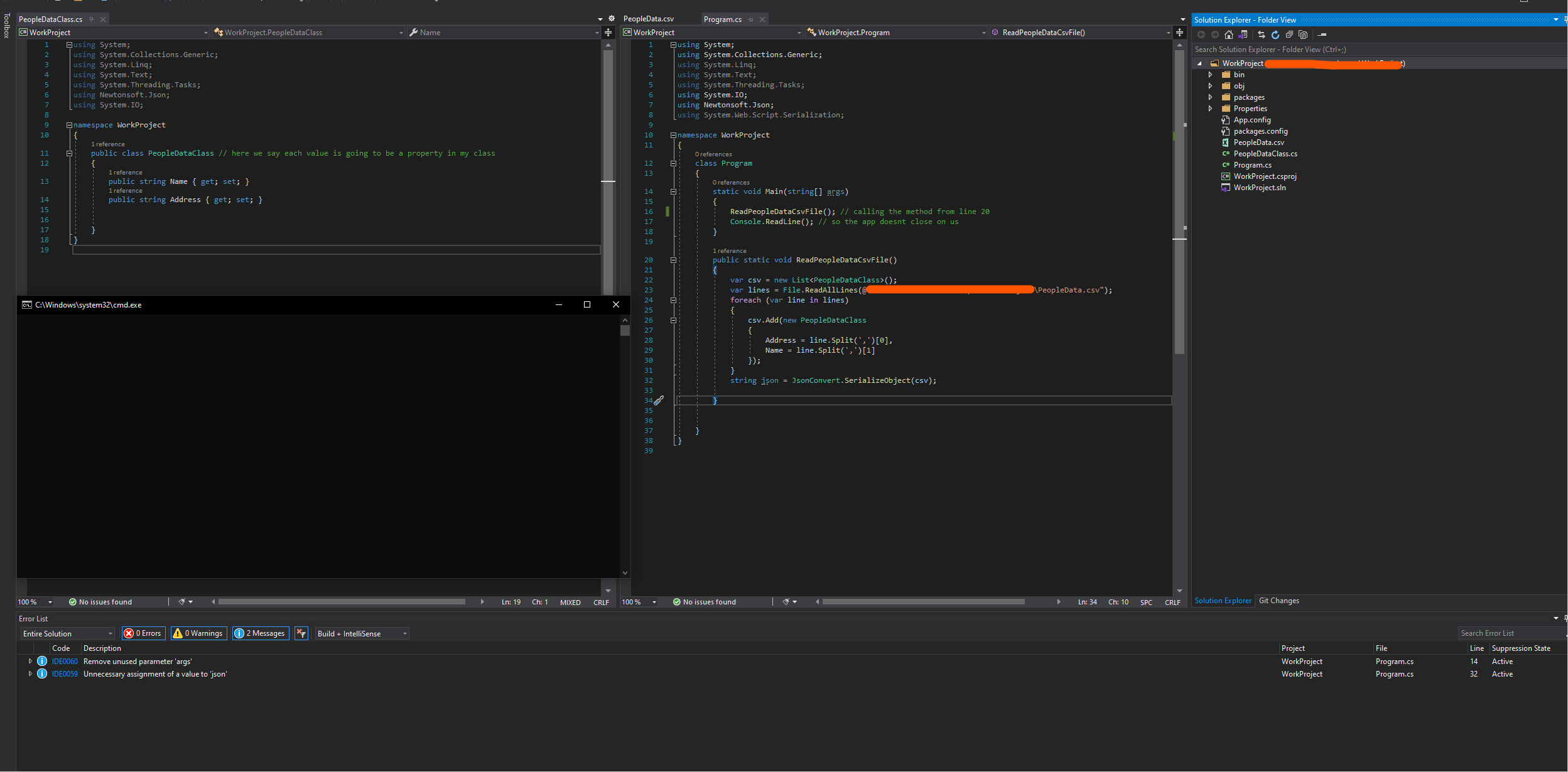

- #JSON CSV DATA CREATOR CHROME PLUGIN HOW TO#
- #JSON CSV DATA CREATOR CHROME PLUGIN ZIP FILE#
- #JSON CSV DATA CREATOR CHROME PLUGIN MANUAL#
- #JSON CSV DATA CREATOR CHROME PLUGIN FULL#
- #JSON CSV DATA CREATOR CHROME PLUGIN CODE#
#JSON CSV DATA CREATOR CHROME PLUGIN CODE#
#JSON CSV DATA CREATOR CHROME PLUGIN MANUAL#
Bulk create QR codes of printers listed on the EveryonePrint server.Ģ methods are exposed, using any spread sheet (Microsoft Excel, OpenOffice Calc.) or using Google Sheets with a specific add-on (less manual steps). A list occurs between two sets of square brackets. This is many values in a row, often many objects in a row. In addition, there’s one more important type of value, highly relevant to converting from JSON to CSV: an array or list. There can be objects within objects by using more curly brackets as the value. All related key/value pairs are stored within a single object, as denoted by the curly brackets.

That is, there is a way to reference a value ( total_items in our example) and the value itself (2869). Most JSON data is stored as key/value pairs. For example, can you tell the total number of results? Almost 3,000-as referenced by the total_items. It still may be daunting, but hopefully, some of it looks familiar. One quick trick to make JSON more readable is to either “pretty print” it or get an extension such as JSONView for Chrome that automatically displays JSON with colors and indentation to make it easier to understand the data within. Much of the time, JSON is returned as a giant wall of text, which is one reason it looks incredibly confusing to non-programmers (and many programmers can’t make much sense of it, either). It’s in JSON format, but if you don’t know what to look for, it might not seem very useful. When you replace “SECRETKEY” with your API key, that returns a bunch of text. Using their examples, we could put together the API call right in the web browser: Within its API documentation, we saw an endpoint (which is like a web address URL) for /events/search. For example, if you use a CRM and you’re wanting to get your contacts via API, look for sections of the documentation that reference “getting contacts” or “listing contacts.”įor our Halloween celebration map of events and our holiday light displays map, we went to Eventful and found “Developer API” in its footer. It can still be intimidating, but you’re looking for descriptions of the type of data you want. The best APIs will have a “getting started” guide or similar tutorial for first-timers. Next, you’ll need to navigate the API documentation.

Look in the footer or header of the website for the words “API,” “developer,” “partners,” or “integrations”.Once you know what to look for, though, accessing many APIs is as intuitive as loading a webpage.įirst, to discover the API, there are a couple of approaches that work well once you know who has the data you want: The interfaces available through the Extension Tool provide technical access to all areas of a workspace including its metadata, the logical data model, and. Perhaps you already know where you’ll get your data, but if you’ve never used an API before, that can be intimidating. Find Your Data Sourceīefore you can convert your JSON, you need to have the data. However, you can convert JSON to CSV or Excel to get the data in a more familiar format.
#JSON CSV DATA CREATOR CHROME PLUGIN FULL#
It’s full of curly braces and doesn’t look very user-friendly. Most APIs produce a different data format, called JSON (or XML). We’ve grown accustomed to viewing our data as columns and rows. The trusty spreadsheet-whether it’s Excel, Google Sheets, Numbers, or any tool that can accept comma separated values (CSV) files-is the data tool of the non-programmer. However, it can be helpful to have it in a format that is familiar and easy to use.

Many APIs have data that could be useful in everyday situations, and you don’t necessarily have to be a programmer to connect to the data. There are thousands of APIs, tools used by developers to connect data from one service to another.
#JSON CSV DATA CREATOR CHROME PLUGIN HOW TO#
How to Convert API Results: JSON to Excel or CSV


 0 kommentar(er)
0 kommentar(er)
